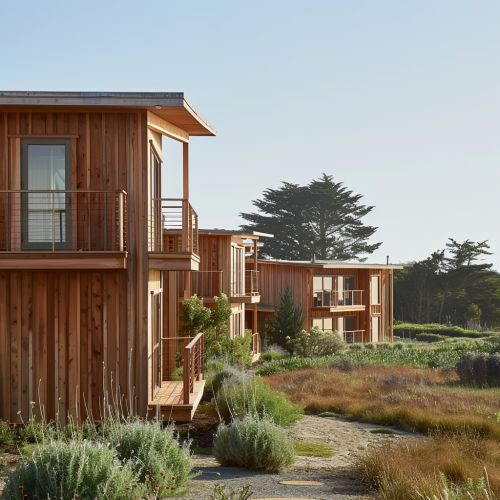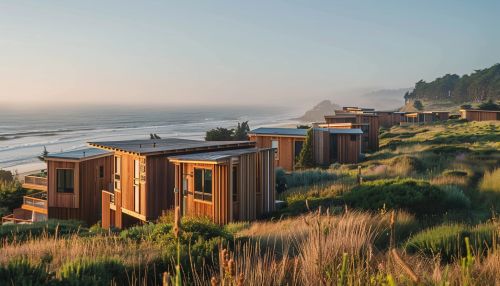Charles Moore
Early Life and Education
Charles Moore, born on October 31, 1938, in East Cleveland, Ohio, is an influential figure in the fields of architecture and urban design. Moore's early life was marked by a deep interest in the built environment, which was nurtured by his parents' encouragement of his creative pursuits. He attended the University of Michigan, where he earned a Bachelor of Architecture degree in 1957. Moore's academic journey continued at Princeton University, where he obtained a Master of Fine Arts in Architecture in 1959 and a Doctor of Philosophy in Architecture in 1965. His doctoral thesis, "Water and Architecture," explored the interplay between aquatic elements and architectural design, laying the foundation for his future work.
Professional Career
Early Career
After completing his education, Moore embarked on an academic career, teaching at various institutions, including the University of California, Berkeley, and Yale University. His tenure at Yale was particularly notable, as he served as the Dean of the Yale School of Architecture from 1965 to 1970. During this period, Moore's work began to gain recognition for its innovative approach to postmodern architecture, characterized by a playful yet thoughtful use of historical references and a focus on human scale and experience.
Founding of MLTW
In 1962, Moore co-founded the architectural firm MLTW (Moore, Lyndon, Turnbull, Whitaker) with colleagues William Turnbull, Donlyn Lyndon, and Richard Whitaker. The firm's work was groundbreaking, particularly the design of the Sea Ranch development in Northern California. Sea Ranch is celebrated for its sensitive integration with the natural landscape, utilizing local materials and vernacular forms to create a harmonious and sustainable community. This project exemplified Moore's philosophy of "place-making," which emphasized the creation of environments that resonate with their cultural and physical contexts.


Architectural Philosophy
Moore's architectural philosophy was deeply influenced by his belief in the importance of context and the experiential quality of spaces. He was a proponent of regionalism, advocating for designs that reflect the unique characteristics of their locations. Moore's work often incorporated elements of vernacular architecture, drawing inspiration from traditional building techniques and forms.
Postmodernism and Playfulness
A key aspect of Moore's work was his embrace of postmodernism, a movement that emerged as a reaction against the austerity and uniformity of modernist architecture. Moore's designs often featured eclectic mixes of styles, vibrant colors, and whimsical details. This approach is evident in projects such as the Piazza d'Italia in New Orleans, a public plaza that combines classical motifs with contemporary materials and playful elements, creating a dynamic and engaging urban space.
Human-Centric Design
Moore was also a strong advocate for human-centric design, emphasizing the importance of creating spaces that cater to the needs and experiences of their users. His residential projects, such as the Condominium One at Sea Ranch, were designed to foster a sense of community and connection among residents. Moore's use of communal spaces, natural light, and tactile materials aimed to enhance the quality of life for occupants.
Major Works and Projects
Sea Ranch
The Sea Ranch development remains one of Moore's most celebrated projects. Located along the rugged Northern California coast, Sea Ranch is a master-planned community that integrates architecture with the natural landscape. The development features a series of wooden structures designed to withstand the harsh coastal climate while blending seamlessly with the environment. Sea Ranch's design principles, including the use of local materials and the preservation of natural features, have influenced sustainable architecture practices worldwide.
Piazza d'Italia
The Piazza d'Italia, completed in 1978, is another iconic project by Moore. Located in the heart of New Orleans, this public plaza is a vibrant example of postmodern design. The piazza features a series of colonnades, fountains, and colorful tilework, all arranged in a playful yet harmonious composition. The project reflects Moore's belief in the importance of public spaces and his ability to create environments that are both functional and visually stimulating.
Kresge College
Moore's design for Kresge College at the University of California, Santa Cruz, is a testament to his commitment to creating educational environments that foster community and interaction. The college's layout, with its interconnected courtyards and communal spaces, encourages social engagement and collaboration among students. Moore's use of natural materials and attention to the surrounding landscape further enhance the sense of place and belonging.
Contributions to Architectural Theory
Moore's contributions to architectural theory are as significant as his built works. His writings, including the influential book "Body, Memory, and Architecture," co-authored with Kent Bloomer, explore the relationship between human experience and the built environment. Moore's theories emphasize the importance of sensory perception, memory, and cultural context in the design process.
Place-Making
Central to Moore's theoretical work is the concept of "place-making," which involves creating environments that resonate with their cultural and physical contexts. Moore argued that architecture should not only fulfill functional requirements but also evoke a sense of identity and belonging. His approach to place-making is evident in projects such as Sea Ranch and Kresge College, where the design is deeply rooted in the local landscape and community.
Experiential Architecture
Moore's focus on experiential architecture highlights the importance of creating spaces that engage the senses and foster emotional connections. He believed that architecture should be more than just a visual art; it should also consider the tactile, auditory, and olfactory experiences of its users. This holistic approach to design is reflected in Moore's use of varied materials, textures, and spatial arrangements to create rich and immersive environments.
Legacy and Influence
Charles Moore's legacy extends beyond his built works and theoretical contributions. As an educator, he mentored numerous architects who have gone on to make significant contributions to the field. His influence can be seen in the work of architects such as Robert Venturi and Michael Graves, who have continued to explore the principles of postmodernism and human-centric design.
Awards and Honors
Throughout his career, Moore received numerous awards and honors in recognition of his contributions to architecture. These include the American Institute of Architects (AIA) Gold Medal in 1991, one of the highest honors in the field. Moore's work has also been featured in exhibitions and publications worldwide, further cementing his status as a leading figure in contemporary architecture.
Continuing Impact
Moore's ideas and designs continue to inspire architects and designers today. His emphasis on context, human experience, and playful experimentation remains relevant in contemporary architectural practice. Projects such as Sea Ranch and the Piazza d'Italia serve as enduring examples of how architecture can create meaningful and engaging environments.
